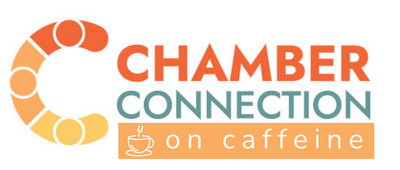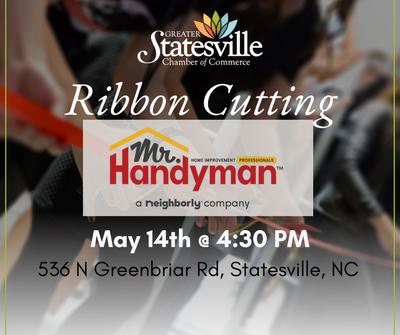Leaves of Three Let Them Be: Identifying and Treating Poison Ivy and Poison Oak

Monday, July 25, 2022
Ever heard, “leaves of three, let them be?” As the old saying goes, you should be cautious around unknown plants with three leaves — they could be poisonous and cause an irritating rash. Outdoor activities should be fun, so make sure these poisonous plants, like poison ivy and poison oak, do not ruin your day.
One of the most common health risks in the summer, poison ivy and poison oak both cause an itchy rash, but they actually look very different. Though they may seem similar, the differences in appearance can help you identify and avoid them this summer.
Telling the Leaves Apart
Poison ivy and poison oak both commonly have three leaves. Poison ivy has three glossy leaves that may be smooth or slightly jagged. The stalk of the middle leaf is much longer than the stalks of the other two leaves. In the summer, poison ivy leaves are green, but in the spring, they can turn red. In the fall, these leaves can be red, yellow, or orange.
Poison ivy grows as a “hairy” vine or as a shrub that may have white berries or flowers.
On the other hand, poison oak leaves are a bit different. They are less pointy and have a hair-like, slightly fuzzy surface. In southern and eastern states, poison oak normally grows as a low shrub. Though they typically grow in leaves of three, these plants can also have five, seven, or nine leaves.
About the Rash
When your skin touches one of these poisonous plants, you develop an itchy rash within 1-2 days after contact. This rash is actually an allergic reaction to urushiol, an oily sap that poison ivy and poison oak produce.
“The allergic reaction to these plants is usually contact dermatitis that presents as itchy bumps and blisters. Most people, about 85% of the population, will have an allergic reaction if they come in contact with these plants,” said Andrea Colvin, family nurse practitioner at Stout Internal Medicine and Wellness.
According to Colvin, this itchy rash typically appears in a linear formation and is associated with swelling, redness, and inflammation. The intensity of the rash differs but may itch so severely that it keeps you up at night. You may also develop blisters that pop and release a clear fluid.
The rash will only occur if your skin touches the plant oil. This means you can develop a rash from directly touching the plant or can get it from any object that has the urushiol oil on it. Urushiol is sticky and may adhere to your pet’s fur when they come in contact with the plant, or on your clothes, tools, or other objects.
A common misconception, poison plant rashes cannot be spread from person to person. By the time the rash has appeared, normally, the urushiol oil is no longer present on your skin. However, this oil can live on objects and surfaces for years until it’s washed off.
It’s worth noting, too, that these poisonous plants can cause reactions in your body even if you never come into physical contact with them.
“It is never safe to burn these plants. An inhalation reaction can occur from burning poison ivy or oak leaves. This leads to significant airway inflammation,” said Colvin.
If you have had a rash from one of these poisonous plants before, the rash usually lasts from 1-14 days before clearing on its own. However, if you have never had a rash from poison ivy or poison oak, the rash may last for 21 days or longer before it completely clears.
Treatment
First and foremost, if you realize that you have touched poison ivy or oak, you should wash the oil from your skin immediately.
Colvin suggests running run cold water over the affected areas for several minutes and using a washcloth with unscented soap to wash the oil away. You can dab, not rub, a cotton swab with rubbing alcohol on the affected area. This works best within the first 10 minutes of contact with the plant.
Unfortunately for most of us, we do not realize we have touched these plants until it is too late. In that case, there are some things you can do to ease your symptoms. According to Colvin, you can:
- Use a small amount of hydrocortisone cream every 4 hours for 1-3 days after the rash develops
- Apply calamine lotion to the affected areas for itching
- Take an oral antihistamine, such as Benadryl, Zyrtec, Claritin, or Allegra
- Take a bath with one cup of colloidal oatmeal or one cup of baking soda to relieve itchiness
- Apply aloe vera to calm and soothe the rash
Though the symptoms are typically treatable at home, there are certain instances when you should seek medical attention. You should call your provider if:
- Your rash covers more than a quarter of your body
- Your rash is on your face or genitals
- You develop a fever
- Your rash has pus, yellow scabs, or tenderness
- Your rash does not improve at all after three days
“Your provider may use an oral corticosteroid to treat your rash, and sometimes in combination with intramuscular injection of corticosteroid to decrease inflammation and itching severity. They may also prescribe an antibiotic if the rash has become infected,” said Colvin.
If you have difficulty breathing, swallowing, or your eyes are swelling, call 911 or go to an emergency room.
When you have a poison ivy or poison oak rash, there are some things that you should not do. Since sweating and increased body temperature can cause more inflammation and swelling, you should not spend time in the sun or in hot areas. And although you will want to, and it may help you temporarily feel better, it’s important not to scratch your itchy rash. This can cause an infection from the bacteria under your fingernails.
Prevention
The most important step to preventing poison ivy and poison oak rashes is learning how to identify the plants and avoid them.
You should also wear protective clothing, like long sleeves and pants, boots, and gloves when working in wooded areas. Colvin suggests applying a barrier skin cream with bentoquatam 15 minutes before potential exposure, as this acts like a shield to the urushiol oil.
After working outdoors, you should clean tools with rubbing alcohol or soap. If you think your pet has been exposed to the plant, put on some long rubber gloves and give them a bath.
Taking these steps toward prevention will help you avoid the painful, uncomfortable, and bothersome rashes from poison ivy and poison oak.
“Avoiding contact with poison ivy and poison oak is the best treatment, as there is no cure for the reaction, only treatments to decrease the symptoms,” said Colvin.
Colvin practices at Stout Internal Medicine and Wellness in Mooresville and is accepting new patients. If you would like to schedule an appointment with Andrea Colvin, please call 704-360-9310.

















(1).png)

.png)